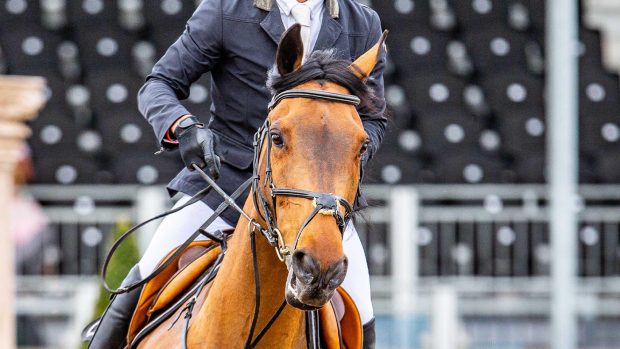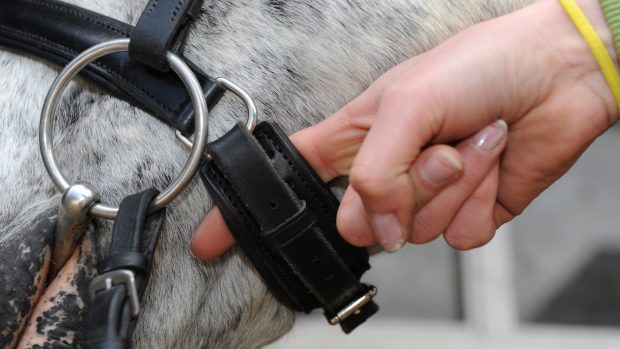Tight nosebands can cause distress to horses, a recent study has found.
A team of researchers from the University of Sydney discovered that horses showed a physiological stress response when wearing a tight crank noseband in combination with a double bridle.
The study, titled The Effect of Noseband Tightening on Horses’ Behavior, Eye Temperature, and Cardiac Responses, focused on horses’ responses to four situations.
Using a crank noseband, reactions were measured while it was unfastened; with a two-finger space (as measured by a taper gauge); with a one-finger space and with “no area” under the noseband.
None of the 12 horses used had worn a double bridle or a crank noseband before.
“If you take horses that have been habituated to this procedure, some will have been more habituated than others,” co-author Professor Paul McGreevy told H&H.
He added that by using “naïve” horses, it is possible to measure an animal’s innate reaction rather than a learned habit.
Researchers found “significant shifts” in heart rate, heart rate variability and eye temperature connected to tight noseband use.
“[This suggests] that horses experience pain or discomfort when nosebands are tightened such that there is no space available underneath them,” the study stated.
“On ethical grounds, the use of relentless pressure to eliminate oral behaviours in pursuit of a competitive advantage may be difficult to justify.”
When the nosebands were tightest, yawning, licking and chewing were “virtually absent” and the frequency of swallowing was halved, the researchers found.
Compared to a baseline test, horses also showed an increase in yawning, licking and swallowing once the noseband was removed.
“When you take the noseband off, the horses reveal what behaviours they have been missing,” Prof McGreevy added.
“Four years ago, the International Society for Equitation Science (ISES) recommended reinstatement of noseband checking at competitions and developed a simple taper gauge to standardise the gap.
“I fully agree with the riders and scholars who have contributed to this proposal.
“An Australian company produces this taper gauge and no ISES members profit from it.”
Related articles:
- Use of spurs, nosebands, bits and draw reins in competition called into question
- Crank nosebands spark welfare concerns *H&H VIP*
He also spoke of what he would like to look into in further research.
“These horses were showing stress responses just standing there,” said Prof McGreevy.
“We would like to look at other horses; we should look at horses being ridden and we would probably want to look at them for longer than ten minutes.”
The findings were published in the peer-reviewed journal Plos One on 3 May.





